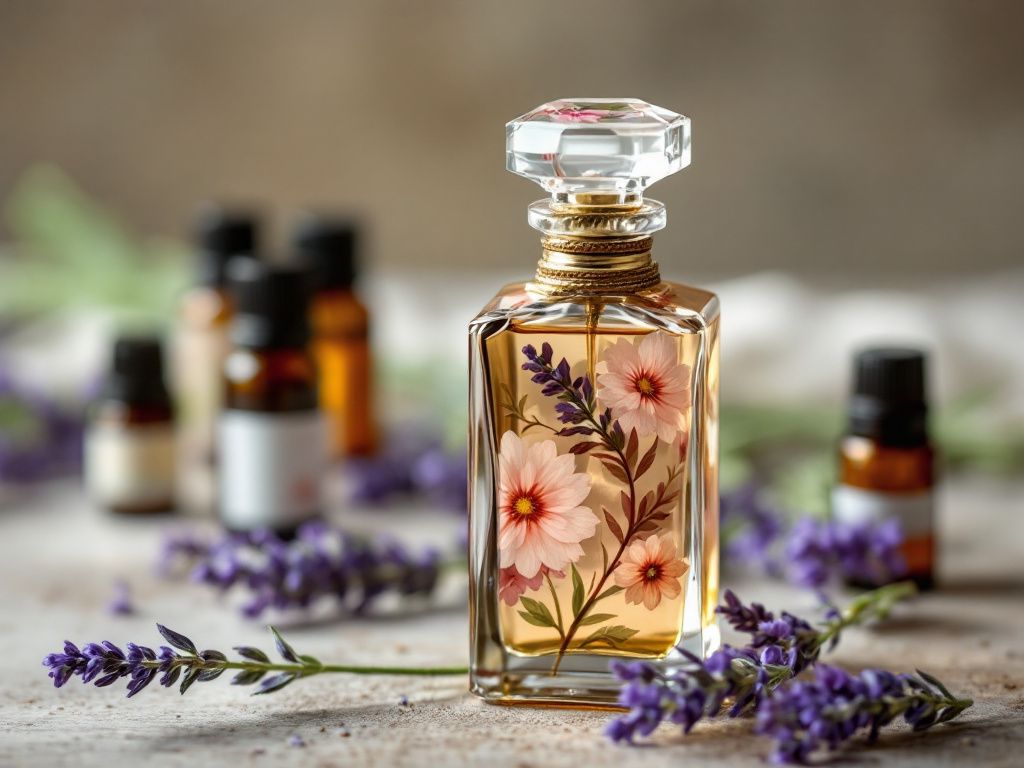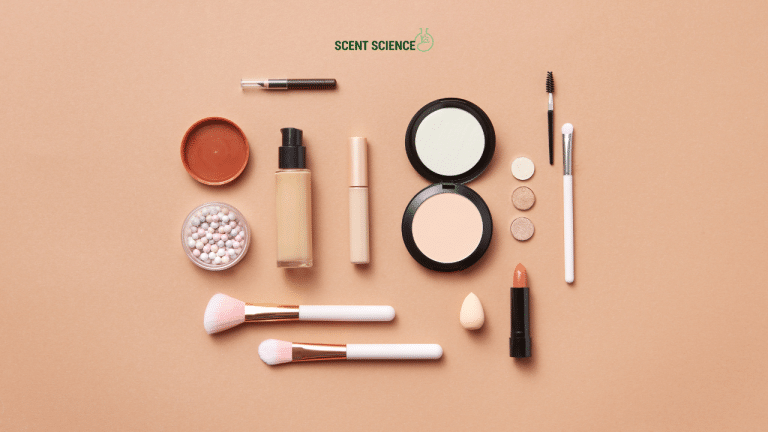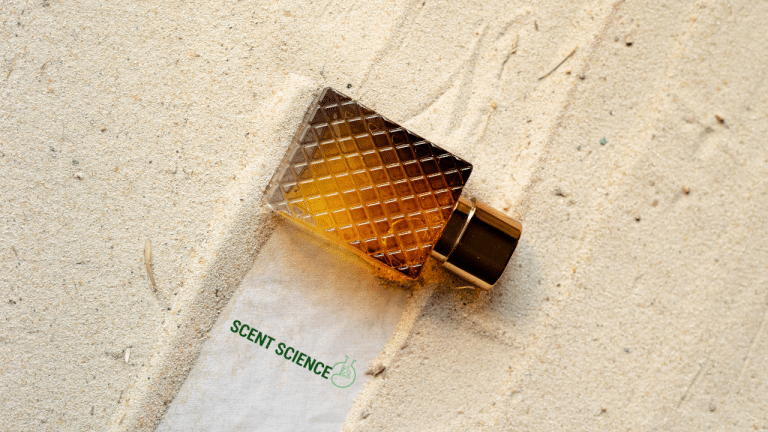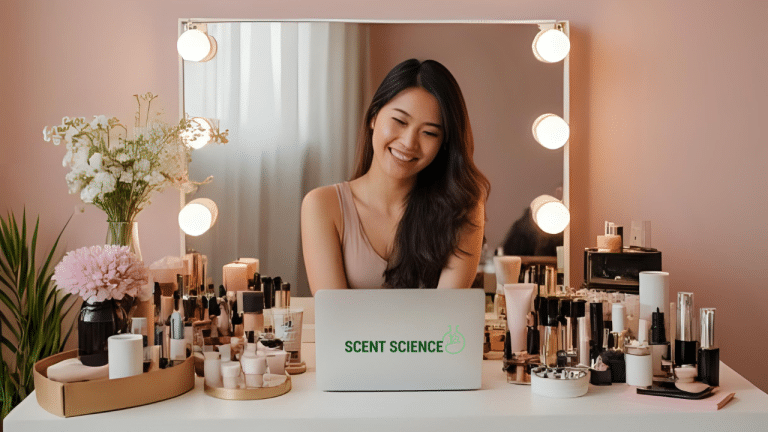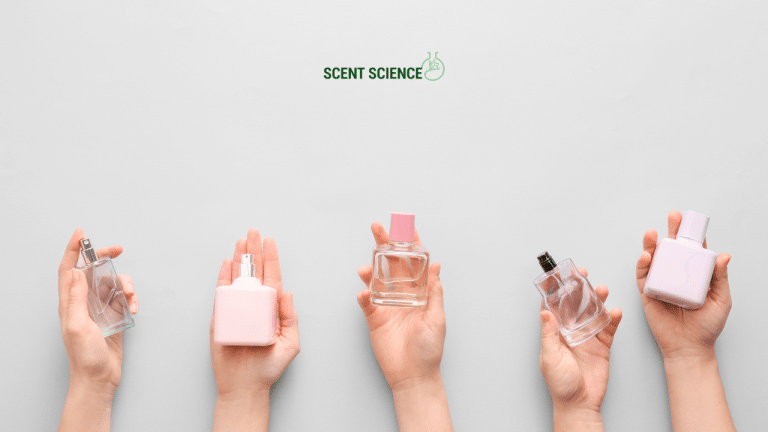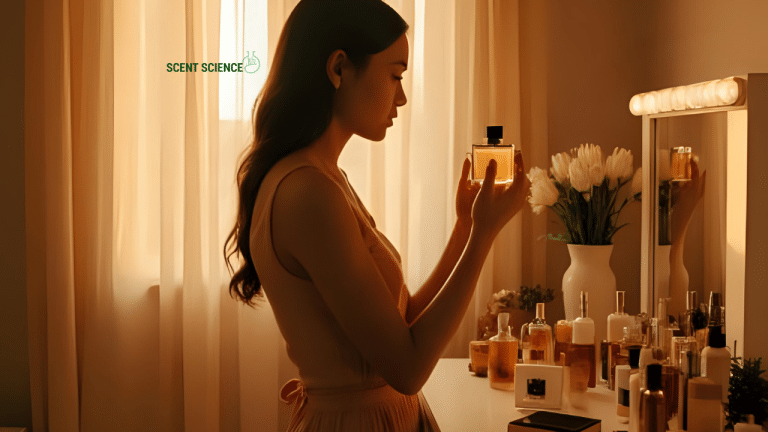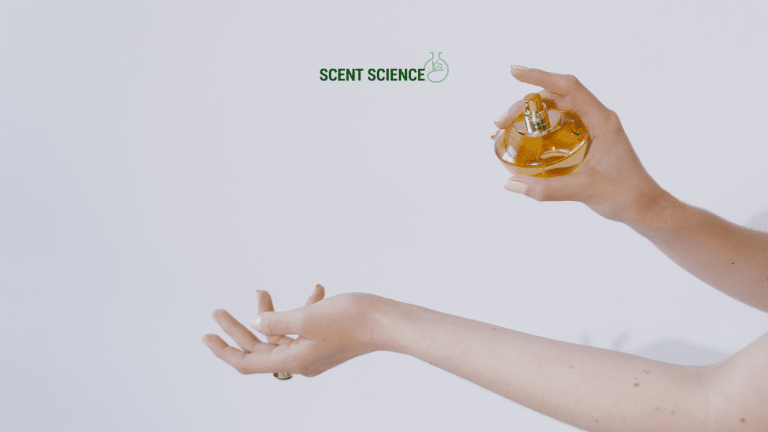Perfume, the seemingly magical potion we spritz to embody elegance, charm, or allure, is far more than just a delightful scent sealed in an elegant bottle. Behind that alluring fragrance is a complex blend of science and art, involving numerous compounds sourced from nature, synthesized in laboratories, or expertly combined to create that perfect scent. Let’s dive into the world of perfume ingredients and expose what’s really inside your favorite fragrance.
Table of Contents
ToggleThe Intricate World of Perfume Ingredients
Perfumes are an intricate synthesis of various ingredients carefully blended to form a harmonious scent. Each component holds its own significance, contributing to the top, middle, and base notes that define a fragrance’s character. Within the perfume industry, these ingredients can be broadly categorized into natural and synthetic compounds.
🌿 Natural Ingredients: The Soul of Traditional Perfumery
Natural ingredients, derived directly from nature, have been used in perfumery for centuries. These mainly include botanical extracts and essential oils that encapsulate the pure aroma of flowers, herbs, spices, and woods.
1. Essential Oils
Essential oils are highly concentrated natural extracts representing the “essence” of the plant’s fragrance. They are procured through processes like steam distillation, solvent extraction, and cold pressing.
- Lavender Oil: A staple in calming fragrances with floral-herbaceous attributes.
- Sandalwood Oil: Known for its deep, woody, and creamy scent, often used in the base of a fragrance.
A study published in the *Journal of Essential Oil Research* highlights the olfactory richness inherent in essential oils, demonstrating their undeniable value in crafting sophisticated perfumes.
2. Absolutes
While essential oils capture the volatile essences of a plant, absolutes are aromatic compounds with intense fragrance profiles, typically used for more delicate flowers that cannot withstand the distillation process.
- Rose Absolute: A luxurious, prominent ingredient derived from rose petals and imbued with velvety softness and floral richness.
- Jasmine Absolute: Celebrated for its heady and exotic aroma, extensively used to amplify floral notes.
The intrinsic olfactory properties of absolutes offer unique complexity and depth to perfumes, making them invaluable in fine perfumery.

🌍 Synthetic Ingredients: Bridging the Gap with Innovation
In contrast to natural counterparts, synthetic ingredients arise from a precise process of formulation chemistry, which engineers scent molecules that may or may not be found in nature. These compounds bring stability, consistency, and an expanded aromatic library to the table.
1. Aromatic Chemicals
The emergence of aromatic chemicals revolutionized the perfume industry by allowing the replication and enhancement of and the creation of entirely new ones.
- Aldehydes: Among the first synthetic aromatics used in perfumes, aldehydes offer sparkling and fresh qualities, famously exemplified in the timeless Chanel No. 5.
- Iso E Super: A smooth, woody, and musky fragrance note widely appreciated for its skin-like warmth. According to the International Fragrance Association (IFRA) standards, it’s commonly used to enhance and blend other scent profiles effectively.
2. Lab-Created Molecules
Modern perfumery leans heavily on fragrance compounds designed in labs for characteristics unattainable through natural raw materials. This innovation often leads to sustainable and eco-friendly solutions while reducing reliance on natural resources.
- Calone: Contributes fresh, ozonic, and sea breeze-like notes, pivotal for concocting oceanic and aquatic fragrances.
These synthetic advances allow for responsible innovation, reduced environmental impact, and uncapped creativity in fragrance formulation. Moreover, they play a crucial role in addressing allergenicity and safety concerns that sometimes arise with natural ingredients.
Crafting the Art of Scent Through Formulation Chemistry
Crafting a fragrance is a meticulous blend of art and science that calls upon intricate formulation chemistry – a process that perfectly harmonizes natural and synthetic ingredients. At its core, perfume creation involves balancing top, middle, and base notes that unfold as the fragrance evolves on the skin.
The Perfume Structure: Notes and Their Evolution 🎵
**1. Top Notes**: The initial impression of a perfume, usually light and volatile.
- Examples: Citrus and light floral scents such as bergamot and lavender.
**2. Middle Notes (Heart Notes)**: Emerge as the top notes dissipate, forming the “heart” of the fragrance.

- Examples: More robust floral and herbaceous notes like rose, jasmine, and ylang-ylang.
**3. Base Notes**: Present in the final phase, they extend the longevity and depth of a perfume.
- Examples: Dense and rich aromas like vanilla, amber, and patchouli.
A 2018 report in the *Fragrance and Flavor Industry Journal* affirmed that the strategic fusion of these notes, driven by well-researched formulation chemistry, leads to successful fragrance creations that captivate and endure.
Navigating the Synthetic vs Natural Debate
The nuanced debate over synthetic vs natural is rooted in consumer preference, marketing claims, and environmental considerations.
Pros and Cons of Natural Ingredients
**Pros**:
- Authentic scents harnessing nature’s bouquet.
- Compatibility with eco-conscious and “clean” beauty trends.
**Cons**:
- Constraints in availability, quality variation, and potential sustainability concerns.
- Possible allergens and stability issues.
Pros and Cons of Synthetic Ingredients
**Pros**:
- Versatile, consistent supply, and durability.
- Expands the olfactory palette with innovative scents.
**Cons**:
- Sometimes viewed as less ‘organic’ or artificial, albeit safely manufactured.
**Case Analysis**: The synergy of using both natural and synthetic elements in perfumery is exemplified by the prolific Eau de Parfum blend “Aoud Lime,” which invites a depth of warm, spicy, and resinous complexity through skillful incorporation of rich natural oud oil and cleverly designed synthetic elements mimicking lime’s bright notes.

Industry Standards and Safety Concerns 🔍
The perfume industry rigorously follows safety standards and best practices to ensure every splash from a perfume bottle is pleasurable and safe. Key organizations include:
- International Fragrance Association (IFRA): Establishes safety standards and reviews fragrance materials to ensure non-toxicity and allergens are addressed.
- The Research Institute for Fragrance Materials (RIFM): Supports safety evaluations and scientific innovation ensuring harmful ingredients are eliminated or restricted.
These entities foster a well-regulated environment, ensuring that emerging formulations balance consumer safety, fragrance quality, and environmental responsibility.
Perfume and Allergens: Commitments to Clean Scents
Modern perfumers respond to increasing consumer awareness by creating hypoallergenic formulas that minimize irritation. Pursuing certifications for natural or organic production can promote transparency, nurturing trust within the perfume community.
[How-To] Tips for Choosing Your Signature Scent
In an overwhelming sea of fragrance choices, selecting a signature perfume requires thoughtful consideration of personal taste, ingredient understanding, and olfactory compatibility. Here’s how you can make an informed choice:
- Understand Your Olfactory Profile: Spend time identifying which fragrance families resonate with you – from floral to fougère, oriental to woody.
- Try Before You Buy: Test fragrance samples on your skin, not just a scent strip. Body chemistry plays a significant role in how a scent evolves.
- Research Ingredient Profiles: Use credible sources to research perfume ingredients; differentiate those that involve aromatherapy benefits or possible allergens.
- Stay Open-Minded: Appreciate the complexity of both natural and synthetic ingredients allowing for richer, often more predictable scent experiences.
- 5. **Consider Ethical Claims: Validate certifications relating to cruelty-free, vegan, or sustainable production if these values align with yours.
Closing Thoughts
The alchemy inside every perfume bottle is a testament to human innovation and creativity, weaving together aromas that evoke memories, emotions, and dreams. Demystifying this olfactory journey provides not only clarity but invites appreciation for ingredients that await each spritz and dab. Whether through synthetic mastery or natural bounty, understanding perfume ingredients enriches our appreciation and guides responsible choices, ensuring that each fragrance on our vanity does more than scent our skin but reflects who we are.
Frequently Asked Questions
What are the benefits of using a hair mask in my hair care routine?
Using a hair mask can provide several benefits, including hydration, smoothing, strengthening, curl definition, heat protection, and damage repair. Hair masks infuse the hair with moisture, help coat the hair shaft to seal split ends, reduce breakage, and protect the hair from heat styling and environmental damage[1][4].
What ingredients should I look for in a hair mask?
Effective hair masks often include ingredients such as coconut oil, argan oil, shea butter, honey, avocado oil, green tea, and coconut water. These ingredients provide nourishment, moisturize, and protect the hair, offering benefits like softening, moisturizing, and protecting against damage[2][5].
How often should I use a hair mask in my routine?
You should use a hair mask whenever your hair feels dry, unmanageable, or in need of intense hydration. This can vary depending on your hair type and needs, but generally, using a hair mask once or twice a week can help maintain healthy and moisturized hair[1][4].
How do I apply a hair mask for the best results?
To apply a hair mask effectively, shampoo your hair first, then apply the mask, focusing especially on the ends where hair tends to be the most damaged. Leave the mask on for anywhere from 10 minutes to overnight, depending on the type of mask and your hair’s needs[1][4].
References
